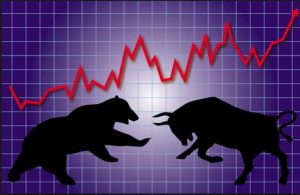
Spy 200 Day Moving Average: Its Significance In Trading
Updated as of April 30, 2024
Intro:
The SPY 200-day moving average (MA) is an essential technical indicator for traders and investors. It offers a definitive view of the S&P 500 index’s long-term trend by averaging the closing prices of the SPY ETF—a proxy for the U.S. large-cap market—over the last 200 trading days. This indicator smooths out day-to-day price fluctuations to reveal underlying movements.
Recognized as a critical psychological threshold, the SPY 200-day MA delineates bullish from bearish territories. Prices above this MA suggest a bullish market with potential buying opportunities, reflecting investor confidence and market strength. Conversely, prices below this average signal a bearish outlook, possibly indicating selling pressure and market pessimism.
Jesse Livermore, a legendary trader, emphasized the importance of the 200-day MA, viewing it as a pivotal line that helped him discern the market’s emotional landscape. He believed that understanding the psychological state of the market through such indicators was as crucial as the price movements themselves.
Echoing Livermore’s views, contemporary market technician Linda Raschke highlights the 200-day MA’s role in institutional trading strategies. According to Raschke, many trading algorithms and institutional traders use this average to adjust their market exposure, reinforcing its significance in generating substantial price support or resistance.
For example, a recent interaction with the SPY 200-day MA occurred when it acted as a resistance level during a market correction, underscoring its role in shaping trader behaviour and strategy adjustments. This event demonstrated the MA’s ability to influence market entry and exit decisions profoundly.
In summary, the SPY 200-day moving average is not just a tool for trend identification; it is a barometer of market sentiment and a cornerstone of strategic trading decisions, respected by novices and experts alike.
Market Direction and Trend Confirmation
The SPY 200-day moving average (MA) serves as a critical indicator of the S&P 500 Index’s long-term trend, providing a visual representation that helps distinguish between uptrends and downtrends. When the SPY trades above this MA, it signals a bullish market condition, suggesting sustained upward momentum. Conversely, trading below the MA indicates a bearish trend, pointing to a potential long-term decline. This trend confirmation is vital for traders to align their strategies with the prevailing market direction.
Psychological Impact and Market Behavior
The 200-day MA is a technical tool and a significant psychological marker that influences market behaviour. Its breach often triggers substantial trading activities, as many market participants closely watch it. According to market expert Linda Raschke, this MA is particularly influential because many institutional trading algorithms use it to determine market exposure, amplifying its impact on price movements.
Limitations of the SPY 200-Day Moving Average
Despite its utility, the 200-day MA has limitations, primarily due to its nature as a lagging indicator. It relies on historical data, which means it might not promptly reflect sudden market changes or new trends until they are well underway. This characteristic can lead to delayed signals that might cause traders to enter or exit trades later than optimal. Additionally, its focus on long-term trends means it lacks sensitivity to short-term market fluctuations, which can be a critical drawback for traders focusing on short-term strategies.
Effectiveness During Volatile Conditions
The 200-day MA may also falter during high market volatility or rapid price changes. In such conditions, the MA might not provide accurate or timely signals, misleading traders about the actual market sentiment. This limitation necessitates additional indicators or analysis methods to ensure a comprehensive market assessment.
Identifying Support and Resistance Levels
Traders can use the 200-day MA to identify potential support or resistance levels, which are key for planning entry and exit points. In an uptrend, the MA often acts as a support level, suggesting that the market might rebound when prices approach this line. In contrast, during downtrends, it can serve as a resistance level, indicating potential selling opportunities when prices rally to this point. Recognizing these levels helps traders make informed decisions by anticipating possible price reversals or continuations.
Mass Psychology and Contrarian Strategies: Enhancing Technical Analysis
The SPY 200-day moving average (MA) is a valuable technical indicator, but its effectiveness can be heightened when combined with an understanding of mass psychology and contrarian investing. This approach focuses on market participants’ collective emotions and behaviours, which can significantly influence price movements.
Influenced by Charlie Munger’s psychology-focused investing philosophy, Contrarian investors seek to identify and embrace contrarian positions. They capitalize on market inefficiencies caused by crowd psychology, buying when others sell and vice versa. This approach, aligned with the sentiments of legendary investors like Munger and Buffett, involves going against the grain to exploit market anomalies.
However, as Munger points out, contrarians often make the mistake of measuring their position relative to the masses while neglecting the positions of other contrarians. This oversight can lead to significant losses and missed opportunities. Therefore, it is crucial to understand the psychological tendencies that drive investor behaviour and think independently.
To improve decision-making, traders should integrate the 200-day MA with other tools, such as volume analysis, RSI, and fundamental research. This holistic approach, embracing conventional technical analysis and psychological insights, can lead to more accurate trading strategies.
By understanding the masses’ psychological dynamics and adopting a contrarian mindset, traders can enhance their interpretation of technical indicators like the SPY 200-day MA. This integrated approach, rooted in the principles espoused by successful investors like Munger and Buffett, offers a more nuanced view of market trends and enhances the potential for success.
Integrating Technical Indicators with Mass Psychology for Identifying Market Tops and Bottoms
To enhance the effectiveness of the SPY 200-day moving average (MA) and better navigate market trends, traders can integrate various technical indicators with an understanding of mass psychology. By combining these tools, traders can gain valuable insights into potential market tops and bottoms.
Relative Strength Index (RSI)
The RSI is a momentum oscillator that measures the speed and change of price movements. It ranges from 0 to 100, with readings above 70 indicating overbought conditions and readings below 30 suggesting oversold conditions. When the SPY price is significantly above the 200-day MA and the RSI is in overbought territory, it may signal a potential market top. Conversely, when the price is well below the MA and the RSI is oversold, it could indicate a market bottom.
Example: If the SPY is trading 20% above its 200-day MA and the RSI is at 85, it may suggest that the market is due for a correction. Contrarian traders might consider taking a short position or reducing their long exposure.
Moving Average Convergence Divergence (MACD)
The MACD is a trend-following momentum indicator that shows the relationship between two moving averages of a security’s price. It consists of a MACD line and a signal line. When the MACD line crosses above the signal line, it generates a bullish signal, and when it crosses below, it generates a bearish signal. Divergences between the MACD and the SPY price can help identify potential trend reversals.
Example: If the SPY price is making higher highs while the MACD is making lower highs, it indicates a bearish divergence and a potential market top. Contrarian traders might consider selling or shorting the market.
Stochastic Oscillator
The Stochastic Oscillator is a momentum indicator that compares the security’s closing price to its price range over a certain period. It consists of two lines: %K and %D. Readings above 80 are considered overbought, while readings below 20 are oversold. Divergences between the Stochastic Oscillator and the SPY price can signal potential market turns.
Example: If the SPY price is making lower lows, but the Stochastic Oscillator is making higher lows, it indicates a bullish divergence and a potential market bottom. Contrarian traders might consider buying or going long on the market.
By combining these indicators with the SPY 200-day MA and an understanding of market psychology, traders can make more informed decisions. However, it’s crucial to remember that no single indicator is perfect, and traders should use various tools and analyses to confirm their views.
As Charlie Munger emphasizes, thinking independently and not simply following the crowd is essential. By understanding the psychological tendencies that drive investor behaviour and using a multi-faceted approach to market analysis, traders can improve their chances of success in identifying market tops and bottoms.
Conclusion
The SPY 200-day moving average is a valuable technical indicator traders and investors use to analyze the market’s long-term trend. Understanding its significance and interpretation allows for identifying trends, support and resistance levels, and informed trading decisions.
By incorporating mass psychology and contrarian investing principles, traders can enhance the accuracy of this indicator. It is essential to know its limitations and use it alongside other analysis techniques for a comprehensive market evaluation. Add the SPY 200-day moving average to your technical analysis toolkit to improve your trading strategy. Happy trading!
To conclude, it is essential to be cautious of mass media, as they often use misdirection as a tactic. The stories they choose to highlight may not be the ones that truly deserve your attention. Instead, please pay close attention to the accounts they neglect or downplay. Embrace the principles of Mass Psychology and contrarian thinking, prioritize trends, and fearlessly seize lucrative opportunities. With your trading journal in hand, confidently navigate the ever-changing tides of the market, illuminating your path towards prosperity.
FAQs
1. Is the SPY 200-day moving average a reliable tool for making investment decisions?
While the 200-day MA is a valuable tool for gauging the market’s long-term trend, it should not be used in isolation. Traders should combine it with other technical indicators and fundamental analysis for comprehensive decision-making.
2. How often should I monitor this average?
Regular monitoring of the 200-day MA can help identify long-term market trends. However, it’s important to remember that this lagging indicator may not offer precise predictions for future price movements.
3. Can this moving average be used for short-term trading?
The 200-day MA is primarily used for understanding long-term trends. For short-term trading strategies, traders typically use other technical indicators that respond more quickly to price changes.
4. Are there any limitations to using this moving average?
The 200-day MA is a lagging indicator, meaning it’s based on past price data. It might not capture sudden market shifts or periods of high volatility effectively.
5. Can the SPY 200-day moving average be used for other indices besides the S&P 500?
Absolutely. The 200-day MA is a versatile tool used to analyze the long-term trend of various indices, not just the S&P 500.
6. How can I use the SPY 200-day moving average in combination with other technical indicators?
The 200-day MA can be used alongside other technical indicators like the RSI, MACD, or Bollinger Bands. These can provide additional insights into short-term price movements, market volatility, and potential buying or selling opportunities.
Discover More: Stimulating Articles That Will Captivate You

Public Education Trends: The Silent Crisis

Stock sentiment and Market sentiment Charts

Flow of Funds: Contrarian Opportunities & BTC Market Insights

Long Term Trends Equates to focusing on the trend

Stock Market Euphoria or Stock Market Insanity

Volatile Stock Market
Gold Breakout Imminent: Rally on the Horizon

Tactical Investor: Archives of Past Market Updates

Navigating the Short Dow ETF: Buy, Sell, or Hold for Maximum Returns

Easy Money Environment Fosters Price manipulation

What is deflation? A bigger Problem Than Inflation

Market Opportunity: Embrace crashes like a lost love

BBC Global 30 Index Indicates Upward Trend for Dow Industrials

Russell 2000: Great Buy Signal In the making



